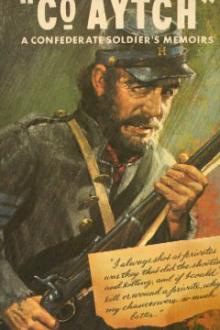The History Of Education by Ellwood P. Cubberley (little red riding hood read aloud .txt) 📕

- Author: Ellwood P. Cubberley
- Performer: -
Book online «The History Of Education by Ellwood P. Cubberley (little red riding hood read aloud .txt) 📕». Author Ellwood P. Cubberley
[2] In 1759 the Jesuits were expelled from Portugal, in 1767 from Spain, and in 1773 the Pope at Rome, “recognizing that the members of this Society have not a little troubled the Christian commonwealth, and that for the welfare of Christendom it were better that the Order should disappear,” abolished the Society entirely. Forty years later it was reconstituted in a modernized form.
[3] Little boys wore their hair long and powdered, carried a sword, and had coats with gilded cuffs, while little girls were dressed in imitation of the lady of fashion. Proper deportment was an important part of a child’s training.
[4] The iconoclastic nature of Rousseau’s volume may be inferred from its opening sentence, in which he says: “Everything is good as it comes from the hand of the author of nature; everything degenerated in the hand of man.” In another place he breaks out: “Man is born, lives, and dies in a state of slavery. At his birth he is stitched into swaddling clothes, at his death he is nailed in his coffin; and as long as he preserves the human form he is held captive by our institutions.”
[5] “I do not presume to exclude ecclesiastics, but I protest against the exclusion of laymen. I dare claim for the nation an education which depends only on the State, because it belongs essentially to the State; because every State has an inalienable and indefeasible right to instruct its members; because, finally, the children of the State ought to be educated by the members of the State.” (La Chalotais.) [6] “Education cannot be too widely diffused, to the end that there may be no class of citizens who may not be brought to participate in its benefits. It is expedient that each citizen receive the education which is adapted to his needs.” (Rolland.)
[7] Condorcet had not been a member of the Constituent Assembly, but for some years had been deeply interested in the idea of public education, and had published five articles on the subject. His Report was a sort of embodiment, in legal form, of his previous thinking on the question.
[8] All the educational aims of the past were now relegated to a second place, and man became a political animal, “brought into the world to know, to love, and to obey the Constitution.” The Declaration of the Rights of Man became the new Catechism of childhood.
[9] This was created on a grand and visionary scale. Its purpose was to supply professors for the higher institutions. It opened with a large attendance, and lectures on mathematics, science, politics, and languages were given by the most eminent scholars of the time. A normal school, though, it hardly was, and in 1795 it closed—a virtual failure. In 1808
Napoleon recreated it, on a less pretentious and a more useful scale, and since then it has continued and rendered useful service as a training-school for teachers for the higher secondary schools of France.
[10] A total of 105 of these Central Schools were to be established, five in Paris, and one in each of the one hundred chief towns in the departments. By 1796 there were 40, by 1797 there were 52, by 1798 there were 59, by 1799 there were 86, and by 1800 there were 91 such schools in existence. This, times considered, was a remarkable development.
[11] “The commercial depression of 1740 fell upon a generation of New Englanders whose minds no longer dwelt preeminently upon religious matters, but who were, on the contrary, preeminently commercial in their interests.” (Green, M, L., Development of Religious Liberty in Connecticut, p, 226.)
[12] Prominent in the Indiana constitutional convention of 1816 were a number of Frenchmen of bearing and ability, then residing in the old territorial capital—Vincennes. How much they influenced the statement of the article on education is not known, but it reads as though French revolutionary ideas had been influential in shaping it.
[13] For the original Bill of 1779 in full, in the original spelling, see the Biennial Report of the Superintendent of Public Instruction for Virginia, 1900-01, pp. lxx-lxxv.
[14] Though Jefferson had been Governor of Virginia during the Revolutionary War; had repeatedly served in the Virginia legislature and in Congress; and had twice been President of the United States, he counted all these as of less importance than the three services mentioned, and in preparing the inscription to be placed on his tomb he included only these three.
[1] “As a man who sought after glory, and whose gloomy temper took umbrage at everything, Rousseau complained that his �mile did not obtain the same success as his other writings. He was truly hard to please! The anger of some, the ardent sympathy of others; on the one hand, the parliamentary decrees condemning the book and issuing a warrant for the author’s arrest, the thunders of the Church, and the famous mandate of the Archbishop of Paris; on the other hand, the applause of the philosophers, of Clairant, Duclos, and d’Alembert,—what more, then, did he want? �mile was burned in Paris and Geneva, but it was read with passion; it was twice translated in London, an honor which no French work had received up to then. In truth never did a book make more noise and thrust itself so much on the attention of men. By its defects, no less than by its qualities, by the inspired and prophetic character of its style, as well as by the paradoxical audacity of its ideas, �mile swayed opinion and stirred up the more generous parts of the human soul.” (Compayr�, G., Jean-Jacques Rousseau, p. 100.)
[2] Paulsen, Fr., German Education, Past and Present, p. 157.
[3] Within three years Basedow had collected seven thousand Reichsthaler, subscriptions coming to him from such widely scattered sources as Joseph II of Austria, Empress Catherine of Russia, King Christian VII of Denmark, “the wealthy class in Basle,” the Abbot of the monastery of Einsiedel in Switzerland, “the royal government of Osnabruck,” the Grand Prince Paul, and others. Jews and Freemasons seem to have taken particular interest in his ideas. Freemason lodges in Hamburg, Leipzig, and G�ttingen were among the generous contributors.
[4] See Barnard’s American Journal of Education, vol. v, pp. 487-520, for an account of the examinations and the institution.
[5] “The pedagogical character of the Real school was established by Basedow and his followers. Originally the plan was to provide for the middle classes what would be called nowadays manual training schools, in which the scientific principles underlying the various trades and business vocations should have a prominent place. These schools were to be one step removed from the trade schools for the lower classes. But under the influence of the Philanthropinists the Real school was transformed into a modern humanistic school, and placed in competition with the humanistic Gymnasium.” (Russell, J. E., German Higher Schools, pp. 65-66.) [6] His two most important followers were Joachim Heinrich Campe (1746-1818), who succeeded Basedow at Dessau and later founded a Philanthropinum at Hamburg, and Christian Gotthilf Salzmann (1744-1811), who founded a school at Schnepfenthal, in Saxe-Gotha. Both these men had for a time been teachers with Basedow at Dessau. Campe translated Locke’s Thoughts and Rousseau’s �mile into German, wrote a number of books for children (chief among which was the famous Robinson der J�nger), and also prepared a number of treatises for teachers. Salzmann’s school, opened in 1784 in the Thuringen forest, made much of gardening, agricultural work, animal study, home geography, nature study, gymnastics, and recreation, as well as book study. It was distinctively a small but high-grade experimental school, so successful that in 1884 it celebrated its one hundredth anniversary. A pupil in the school was Carl Ritter, the founder of modern geographical study.
[7] “The picture shown in Leonard and Gertrude is very crude. Everywhere is visible the rough hand of the painter, a strong, untiring hand, painting an eternal image, of which this in paper and print is the merest sketch…. Read it and see how puerile it is, how too obvious are its moralities. Read it a second time, and note how earnest it is, how exact and accurate are its peasant scenes. Read it yet again, and recognize in it the outpouring of a rare soul, working, pleading, ready to be despised, for fellow souls.” (J. P. Monroe, The Educational Ideal, p. 182.) [8] “When I now look back and ask myself: What have I specially done for the very being of education, I find I have fixed the highest supreme principle of instruction in the recognition of sense impression as the absolute foundation of all knowledge. Apart from all special teaching I have sought to discover the nature of teaching itself, and the prototype, by which nature herself has determined the instruction of our race.” (Pestalozzi, How Gertrude teaches her Children, X, Section 1.) [9] “What he did was to emphasize the new purpose in education, but vaguely perceived, where held at all, by others; to make clear the new meaning of education which existed in rather a nebulous state in the public mind; to formulate an entirely new method, based on new principles, both of which were to receive a further development in subsequent times, and to pass under his name; and finally, to give an entirely new spirit to the schoolroom.” (Monroe, Paul, Text Book in the History of Education, p. 600.)
[10] In 1809 the German, Carl Ritter, a former pupil of Salzmann (see footnote 2, p. 538) and the creator of modern geographical study, visited Pestalozzi at Yverdon. Of this visit he writes: “I have seen more than the paradise of Switzerland, I have seen Pestalozzi, I have learned to know his heart and his genius. Never have I felt so impressed with the sanctity of my vocation as when I was with this noble son of Switzerland. I cannot recall without emotion this society of strong men, struggling with the present, with the aim of clearing the way for a better future, men whose only joy and reward is the hope of raising the child to the dignity of man.
“I left Yverdon resolved to fulfill my promise made to Pestalozzi to carry his method into geography…. Pestalozzi did not know as much geography as a child in our Primary Schools, but, none the less, have I learned that science from him, for it was in listening to him that I felt awaken within me the instinct of the natural methods; he showed me the way.” (Guimps, Baron de, Pestalozzi, his Aim and Work, p. 167.)
[11] The young German student of geology and mineralogy, Karl George von Raumer (1783-1865), was in Paris, in 1808. While there he read Pestalozzi’s How Gertrude teaches her Children, and what Fichte had said of his work in his Addresses to the German Nation (see chapter xxii).
These sent him to Yverdon to see for himself. He remained two years, and returned to Germany as a teacher. In 1846 he published his four-volume Geschichte der P�dagogik, the first important history of education to be written.
[12] In 1814 King Frederick William III himself visited Pestalozzi, at Neufchatel. His queen, Louise, was deeply touched by reading the �mile, and frequently spent hours in the Prussian schools witnessing work conducted after the ideas of Pestalozzi.
[1] One of the first acts of the reign of Frederick the Great was to recall Wolff from banishment. In doing so he said: “A





Comments (0)